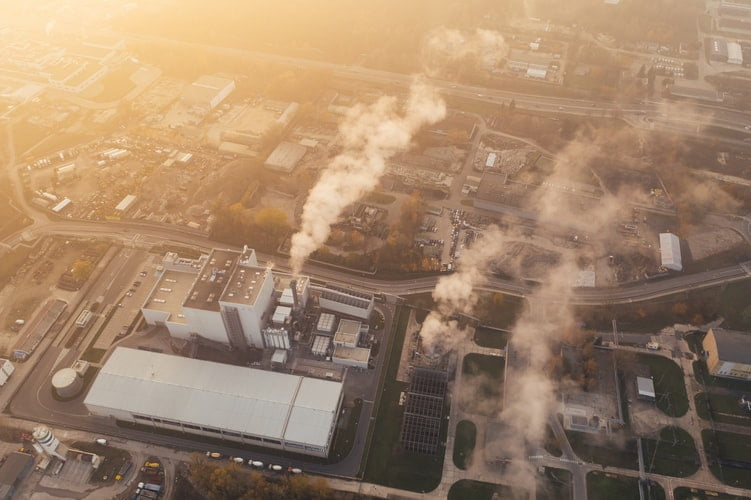After the collection and transportation of carbon dioxide, we need to store the gas. So global geologic carbon storage, also known as geo-sequestration, is injected directly underground for permanent storage. Potential underground storage locations include oil and gas fields, saline formations, and coal seams that you can’t mine.
Global Geologic Carbon Storage
Geologic carbon storage prevents CO2 from escaping back to the surface and into the atmosphere. Several techniques need to be employed for geologic carbon storage, like using highly impermeable rock or other geological properties. A good example is in an un-mineable coal seam where the coal absorbs the carbon molecules.
During absorption, the coal releases the previously adsorbed methane in a process known as “enhanced coal bed methane recovery.” The permeability of the coal bed plays a part in geologic carbon storage.
Saline formations make great geologic carbon storage because of their large capacity to store large quantities of waste and their widespread presence. In addition, saline aquifers contain highly mineralized brines, ideal for long-term hazardous waste storage like CO2 or chemical waste. On the other hand, Sulfate-based storage uses mechanisms like residual entrapment, solubility entrapment, structural trapping, and mineral entrapment to keep the carbon dioxide underground with minimal leakage.
According to the studies conducted in 2013 concerning the nationwide assessment of geologic carbon sequestration, the carbon dioxide storage potential as estimated by scientists at 3,000 metric gigatons. Research suggests that the USA can store about 1.8 trillion metric tons of CO2 in deep aquifers, porous rock, and other geologic locations.
Carbon dioxide has the potential to exist in both gaseous and liquid states. Following those two characteristics, CO2 can easily seep into the porous rocks making it possible to store it in a small area. Thus, oil and gas reservoirs make great geologic storage locations as they consist of layers of porous rock.
Ocean carbon storage is also a potential geologic storage location. The ocean has vast underground storage, making it possible to store CO2 at a depth greater than 3,000 meters or 9,842 feet. It is possible to trap carbon dioxide underwater because it is denser than water. However, there is not enough research done to address the concerns about the safety of marine life. Carbon dioxide has the potential to make water acidic, which may cause harm to marine life.
To determine the best geological carbon storage method is suitable for your need, consult with the best companies in the field like Melzer Consulting, who are well equipped and informed on the current technology in oil recovery techniques. Work alongside professionals who will guide and provide you with the necessary information on geological carbon storage, oil, and enhanced oil recovery (EOR). The companies are open to oil producers, CO2 source companies, and research organizations.
Storage Requirements for Bulk Carbon Dioxide
Approaches to handle the global geologic storage capacity of carbon dioxide are still in their early stages of development. The current requirements are based on resource estimation, statistical information, analytical methods, and numerical analysis.
According to the United Nations Intergovernmental Panel on Climate Change (IPCC) research, a limit of less than 20C climate change is required to deploy bulk carbon capture and storage. Many scenarios indicate that globally we should store over 1000 gigatons of carbon dioxide to limit the climatic changes, yet global storage capacity is unknown.
With the current growth in carbon capture and storage, the storage requirements are divided into annual storage rates and long-term requirements to achieve the mentioned target. To achieve the climate change set targets, at least 2700 GB of storage is required.
The climate change mitigation targets will provide policymakers, industrial developers, scientific institutions, and NGOs with tools to monitor short-term and long-term resources needed for bulk carbon capture and storage.
Carbon dioxide emissions exceed the rate at which the gas is absorbed by terrestrial and oceanic systems globally. Carbon dioxide is linked to global warming changes observed worldwide like water and food shortages, rising sea levels, and resource scarcity. The world depends heavily on fossil fuel, which is cheap to produce, yielding about 80% of the primary energy supply. Combustion of fossil fuel leads to the emission of CO2, and the bulk production of energy causes an energy-climate crisis.
To combat climate changes, governments all over the world have set strategies to end the energy-climate crisis. These strategies include:
- Increased use of natural gas relative to fossil fuel and coal
- Increased use of renewable energy sources like solar, wind, and geothermal.
- Use of nuclear energy to reduce the net CO2 emission.
- Introduction of carbon capture, utilization, and storage.
If further investigations indicate that geologic carbon storage plays a part in the unacceptable impacts causing climate changes, then we will discard the approach. However, with the recent research Geologic Carbon Storage (GCS) is the best solution to dealing with the subsurface CO2 emissions. The main concern is the environmental risks associated with GCS and whether they are acceptable to the public or not.
Carbon Dioxide Cylinder Storage Requirements
When storing carbon dioxide in cylinders, make sure to put them in a cool and dry environment away from direct sunlight, and make the environment better. CO2 should remain buried for at least 10,000 years to avoid environmental and climatic impacts. Some of the cylinder storage requirements include:
- The storage area should be well ventilated because as little as 15% of carbon dioxide can cause unconsciousness in less than a minute.
- The cylinders should be stored in a secure location with access to authorized personnel.
- The compressed gas containers, tanks, and cylinders are secure to prevent falling caused by impact, common vibration, or seismic activity.
- Ensure the protective valve caps are secured and compress at all times, even when they are empty.
- The gas containers, cylinders, and tanks are not placed near elevators, ledges, or unprotected platforms or areas where the drop distance is above ½ the height of the container, cylinder, or tank.
- Never store a charged CO2 cylinder in a passenger vehicle or cab.
- Maintenance of the egress is continuous, meaning free from obstructions or impediments like fire.
- The cylinders should be stored separately from other materials and conditions which present possible exposure to hazards.
Geologic Carbon Storage in the Future
CO2 enhanced oil recovery has been a major financial motivator of CCS so far. However, this may not be enough to maintain or boost growth in the second part of the century, as required to meet the 2100 emissions reduction goals. For this reason, stakeholders need to assess future storage resource requirements and quantify CO2 storage progress in the context of climate change mitigation goals, regardless of future incentivization structures and storage growth rates.
Read Also:





























